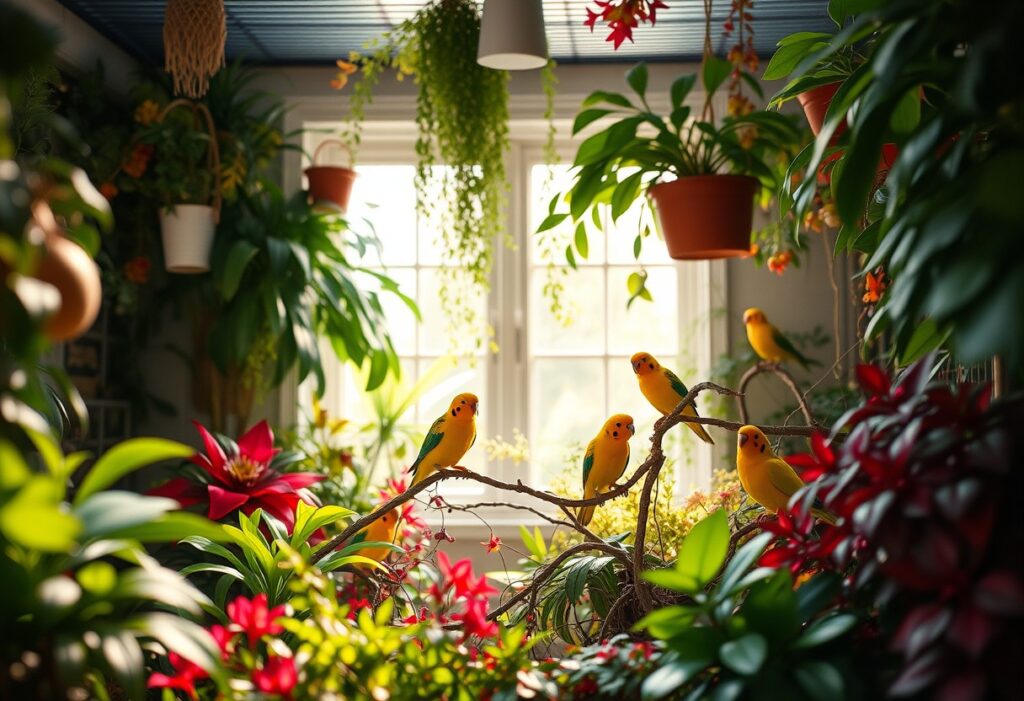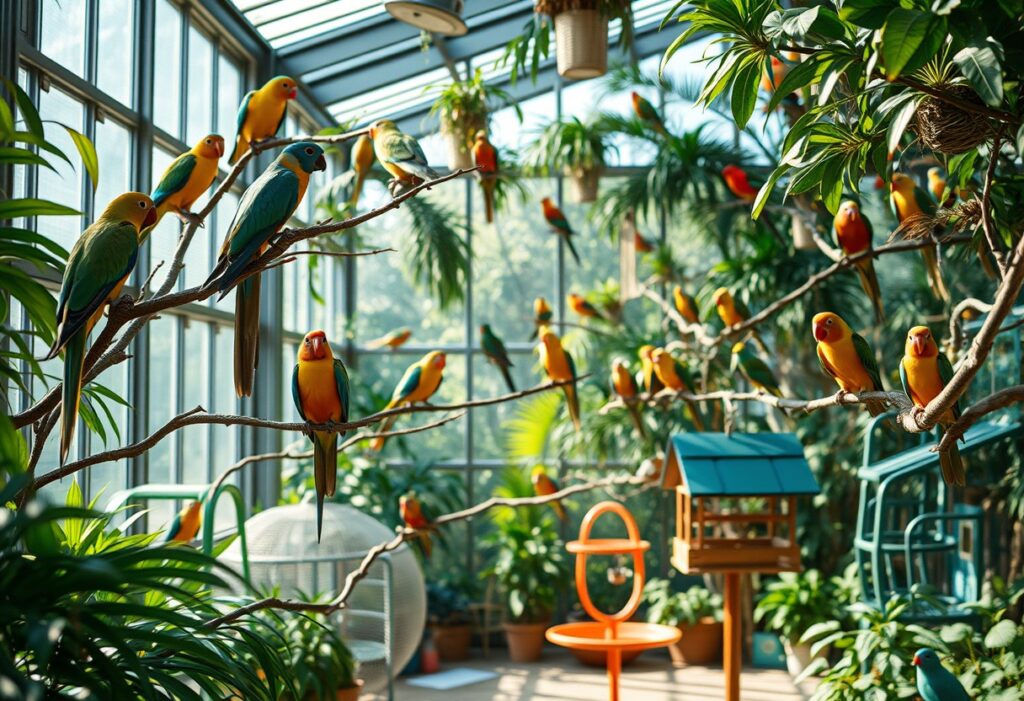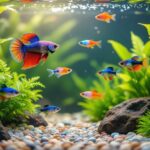Over time, you may have noticed how the presence of a healthy, plant-based environment can significantly enhance birdlife in your area. By cultivating native plants and creating diverse habitats, you not only provide important food sources and shelter for birds but also promote their overall well-being. A thriving ecosystem supports biodiversity, reduces threats from invasive species, and fosters a vibrant community of feathered friends. Implementing these changes in your outdoor spaces can lead to positive effects on local bird populations and contribute to a sustainable environment.
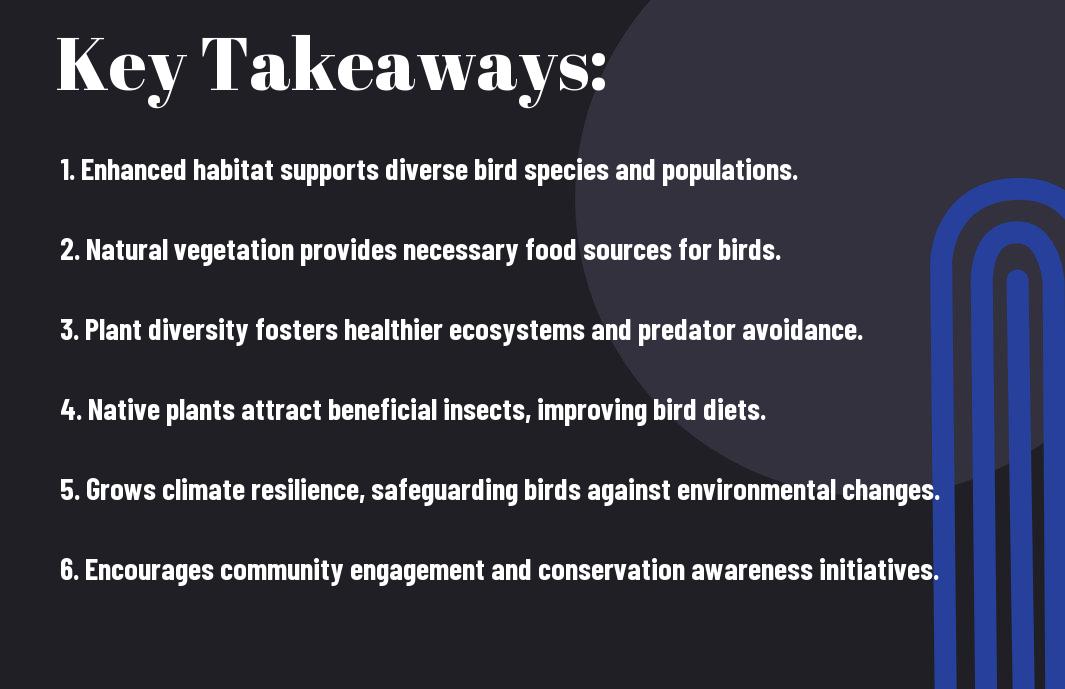
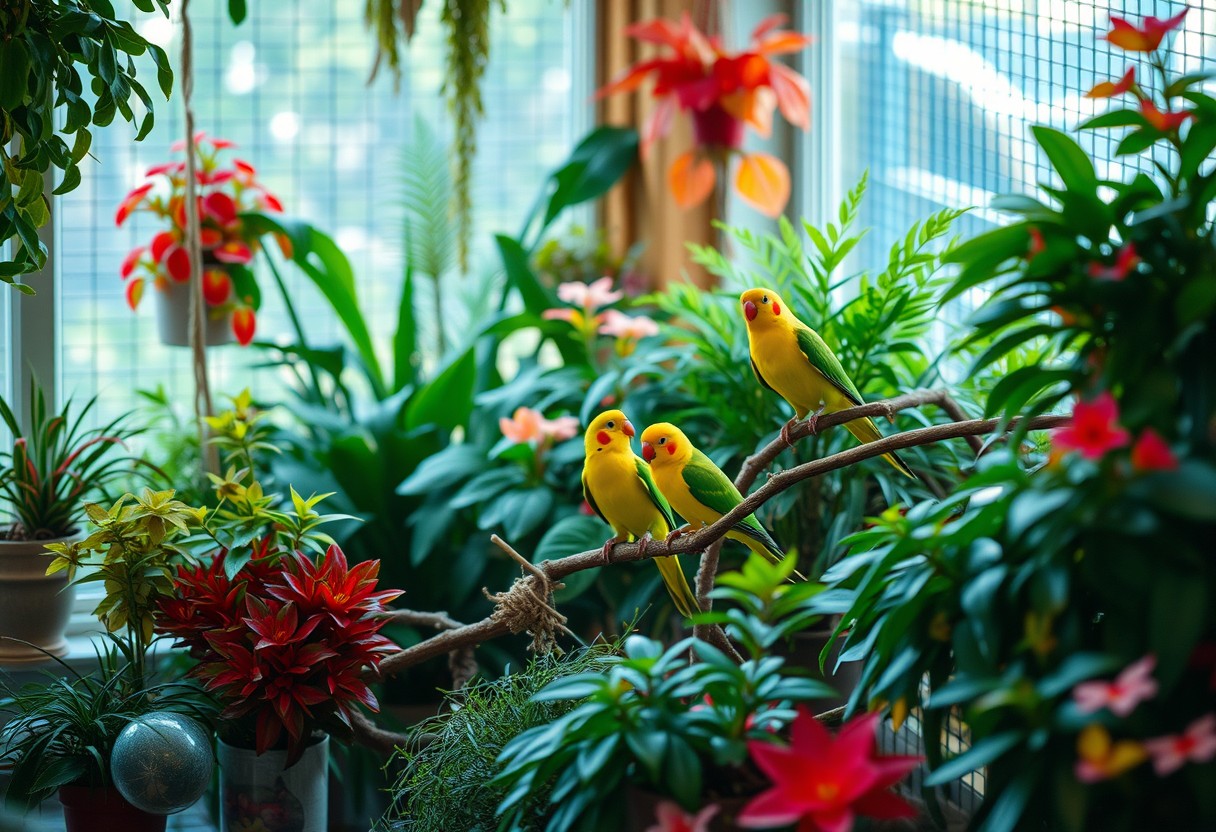
The Benefits of a Plant-Based Environment for Birds
Definition of Plant-Based Environments
Your understanding of plant-based environments is important for appreciating the nuances of the habitats that benefit various bird species. A plant-based environment refers to ecosystems that are primarily dominated by plant life, such as gardens, forests, wetlands, and meadows. These ecosystems provide the necessary food sources, nesting sites, and shelter that birds require for survival. In these environments, plants are more than just a backdrop; they are integral components that support complex food webs and facilitate the overall health of avian populations.
Understanding how different plant species contribute to the avian ecosystem helps you recognize the importance of diversity in plant life. The variety of plants influences not only the types of birds that can inhabit a region, but also their behavior, breeding patterns, and migratory habits. As you explore deeper into the components of these environments, you’ll discover how nurturing plant diversity positively impacts bird populations.
Key Components of Habitat Diversity
With a keen eye on the habitat diversity, you can better appreciate the intricate relationships between various plant types and the birds they support. Diverse plant communities provide a range of microhabitats that cater to different species. For instance, some birds thrive in dense underbrush for protection, while others prefer open canopies for foraging. This diversity means that you’ll likely encounter a plethora of bird species when the ecological balance is maintained.
A well-planned plant-based environment includes components such as diverse vegetation layers, varying plant heights, and a mix of native and non-native species. Each of these elements plays a significant role in creating niches for different birds. For instance, native plants typically offer better nutrition and shelter than non-native species, which may not support local bird populations effectively. Moreover, preserving a mix of deciduous and evergreen trees can also create year-round habitats, ensuring your space remains vibrant with avian life throughout the seasons.
Nutritional Benefits
Any bird enthusiast knows that a proper diet plays a crucial role in the health and well-being of your feathered friends. A plant-based environment offers an abundance of nutritional benefits that can significantly enhance the lives of birds. By creating a lush space filled with a variety of plants, you not only attract different species but also provide them with the natural food sources they need to thrive. With an array of seeds, nuts, fruits, and nectar-rich flowers, birds can easily access highly nutritious meals that align with their dietary needs.
Availability of Natural Food Sources
One of the greatest advantages of a plant-based environment is the availability of natural food sources. Birds in your garden or local area can benefit from native plants that produce seeds, fruits, and nectar. This not only provides a fresh and organic food source for birds but also helps to sustain their energy levels throughout the day. Planting a variety of flowering plants and shrubs ensures that you will have a continuous supply of food, which is especially crucial during migration seasons when birds rely heavily on accessible nutrition.
Additionally, by incorporating different plant species, you create a diverse habitat that attracts a wider range of bird species. This not only enriches your birdwatching experience but also promotes ecological balance. When birds can find their preferred food sources in your plant-rich environment, they are more likely to frequent your space, fostering a vibrant and healthy bird population.
Impact on Bird Health and Longevity
For your birds, the impact on health and longevity cannot be overstated when it comes to a plant-based environment. A diet rich in variety and natural foods helps to prevent malnutrition and deficiency-related diseases, allowing your birds to live longer, healthier lives. When they feed on a range of nutrients from plants, their immune systems strengthen, making them more resilient against illnesses.
The quality of food directly influences your birds’ overall vitality and reproductive success. A nutritious diet not only supports the physical health of your birds but also enhances their cognitive function and social behaviors. With access to a well-balanced array of natural foods, you can help ensure that your birds not only survive but thrive in their environment.
Shelter and Nesting Opportunities
Not only do birds require food and water to thrive, but shelter and nesting opportunities are vital components of their survival. By fostering a plant-based environment, you can significantly enhance the habitat for local bird species. A rich tapestry of vegetation provides crucial protection from predators, adverse weather conditions, and offers a suitable space for nesting and raising their young. The presence of diverse plant life, including trees, shrubs, and grasses, creates a layered habitat that fulfills the varying needs of different bird species.
Importance of Vegetative Cover
Importance of vegetative cover cannot be overstated when it comes to supporting avian populations. Dense vegetation offers birds vital protective cover that helps them evade predators while also providing thermal regulation. Well-planned plantings can create microhabitats that suit the specific needs of various bird species, ultimately increasing your yard’s biodiversity.
| Aspect | Details |
|---|---|
| Adaptation | Birds adapt their nesting behaviors based on available vegetation. |
| Protection | Dense shrubs offer protection from harsh weather and predation. |
| Microhabitats | Different levels of cover support diverse bird species. |
| Food Sources | Vegetative cover often provides natural food sources for birds. |
| Breeding Ground | Healthy cover contributes to successful breeding seasons. |
Types of Nesting Preferences in Various Birds
Understanding the types of nesting preferences in various birds will help you tailor your plant choices accordingly. Different bird species exhibit distinct preferences for nesting sites, influenced by factors such as safety, accessibility, and environmental conditions. For instance, some species, like robins, prefer to build their nests in sturdy shrubs or tree branches, while others, such as sparrows, may feel secure nesting in dense grass or reed beds. By providing a variety of plants, you can encourage more birds to inhabit your space.
| Bird Species | Nesting Preference |
|---|---|
| Robins | Build nests in tree branches or shrubs. |
| Sparrows | Nest in dense grasses or reed beds. |
| Woodpeckers | Drill holes in trees to create nesting sites. |
| Hummingbirds | Favor hanging nests in overhanging branches or foliage. |
| Swallows | Prefer to nest under eaves or in areas with high visibility. |
Plus, a deeper comprehension of bird nesting preferences can further enrich your garden or environment. Consider that some species might also seek out *artificial structures* for nesting in the absence of natural options. By understanding these behaviors, you can more effectively select plants and potentially add birdhouses or nesting platforms that cater specifically to the needs of various birds in your environment.
- Research local species to understand their nesting habits.
- Incorporate a range of plant types to accommodate diversity.
- Provide food sources close to nesting areas.
- Ensure predator protection with dense covering.
- Maintain healthy vegetation for habitat stability.
The key takeaway is that by fostering a rich plant-based environment, you can dramatically enhance shelter and nesting opportunities for birds, leading to a more vibrant and diverse bird population in your area.
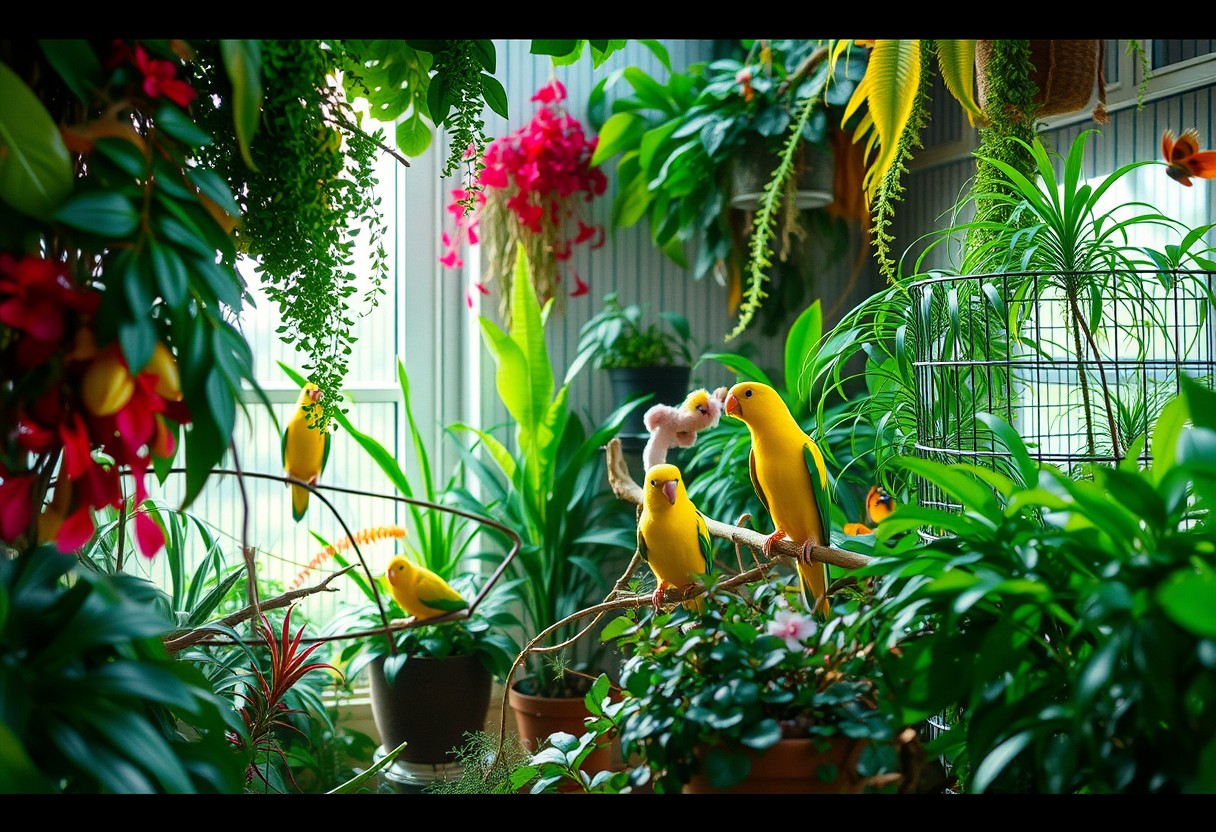
Ecosystem Interactions
For a healthy and thriving environment, it is crucial to understand how different species interact within ecosystems. Birds play a vital role in maintaining these connections, especially in areas emphasized by plant-based settings. Their movements and behaviors greatly influence native plant species and can facilitate a more balanced ecosystem, ultimately benefiting all flora and fauna. By creating a plant-friendly environment, you can enhance the habitat for birds, which will, in turn, foster greater interactions that are important for ecological stability.
Role of Birds in Plant Pollination
For many species of plants, birds are not just beautiful additions to your garden; they are important pollinators. Certain birds, such as hummingbirds and sunbirds, actively seek out nectar-rich flowers and play a critical role in the fertilization process. As they move from flower to flower, they inadvertently transfer pollen, leading to the reproduction of plants. By creating a plant-based environment with a variety of flowering species, you can attract these important avian pollinators, enhancing the genetic diversity and resilience of your local vegetation.
For gardeners and nature enthusiasts, understanding this relationship can inspire you to cultivate a diverse range of plants designed to attract birds. By incorporating native flowering species, you foster an environment that encourages these pollinators to visit frequently, boosting plant health and even fruit production. The connection between birds and plants strengthens the overall ecosystem, showcasing the direct benefits of your plant-friendly initiatives.
Effects on Pest Control and Biodiversity
For those who are dedicated to creating a harmonious garden space, understanding how birds contribute to pest control is crucial. Birds are natural predators of many common pests, including insects and rodents that can harm your plants. By attracting birds to your garden with a diverse selection of plants, you empower them to take an active role in managing unwanted pests. This not only reduces the need for chemical pest control methods—benefiting both the environment and your health—but it also promotes a more biodiverse community of organisms that coexist in your garden.
It is important to recognize how this pest control dynamic can lead to a flourishing ecosystem. When you support bird populations with a plant-based habitat, you also encourage other wildlife, such as beneficial insects and even larger animals, creating a more vibrant and balanced ecosystem. This interconnectedness fosters resilience against environmental challenges and promotes biodiversity in your local setting, making your garden not just a personal sanctuary but also a vital part of the larger ecological mosaic. By embracing these interactions, you’re contributing to a healthier planet.
Final Words
With these considerations, you can see that nurturing a plant-based environment significantly benefits the avian species in your area. By planting native flora, you not only create a more sustainable habitat for birds but also contribute to the overall health of your local ecosystem. Birds rely on plants for food, shelter, and nesting sites, which makes your garden or local green space a vital resource. Additionally, an environment rich in diverse plant life promotes biodiversity, helping to sustain a wider variety of bird species that might otherwise struggle to survive in less hospitable conditions.
Furthermore, by advocating for and cultivating a plant-based environment, you take an active role in conservation efforts that extend beyond your immediate surroundings. You foster a deeper connection with nature, quite possibly inspiring others in your community to participate in creating bird-friendly habitats. Your commitment reflects a broader understanding of and respect for the interdependent relationships within ecosystems, ultimately leading to a more harmonious coexistence with the avian species that enrich our lives. So, embrace the power of plants, and watch your surroundings transform into a vital sanctuary for birds.
FAQ
Q: What are the main benefits of a plant-based environment for birds?
A: A plant-based environment offers numerous advantages for bird species. Firstly, it provides necessary food sources such as fruits, seeds, and nectar, which are critical for a bird’s diet. Secondly, dense vegetation creates natural habitats that offer shelter and nesting sites, enhancing the birds’ chances of breeding successfully. Finally, a diverse array of plants can encourage biodiversity by attracting various insects and other wildlife, which can serve as additional food sources for birds and help maintain ecological balance.
Q: How does a plant-based environment support bird health and well-being?
A: A plant-based environment plays a significant role in supporting bird health by providing natural foraging opportunities. Birds that can forage in a plant-rich area are less likely to encounter harmful chemicals often found in urban settings. Moreover, the presence of a wide variety of plants ensures that birds can access a balanced diet, which is necessary for their growth, immune function, and overall health. Additionally, these environments often have better air quality and lower levels of stressors like noise pollution, contributing to improved well-being for birds.
Q: What steps can be taken to create a plant-based environment that benefits birds?
A: To create a plant-based environment that benefits birds, individuals and communities can take several actionable steps. First, they can plant a variety of native plants, trees, and shrubs that provide food and habitat specific to local bird species. Incorporating flowering plants can attract pollinators which, in turn, supports birds through increased food availability. Moreover, minimizing pesticide use and promoting organic gardening practices can help create a safe space for birds. Lastly, establishing bird feeders and water sources can supplement their diet and encourage avian visits, fostering a thriving ecosystem.
